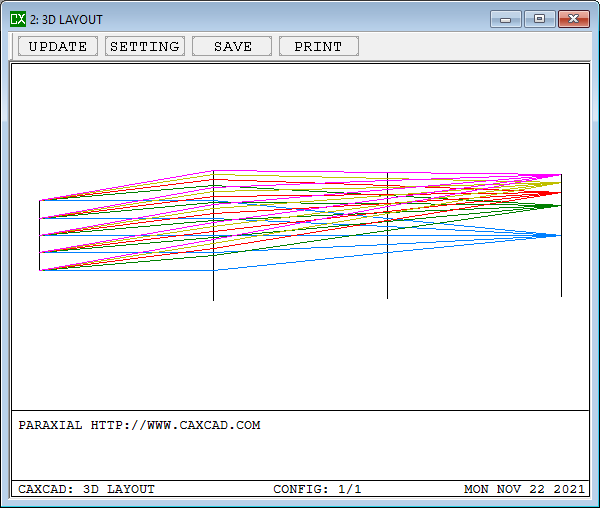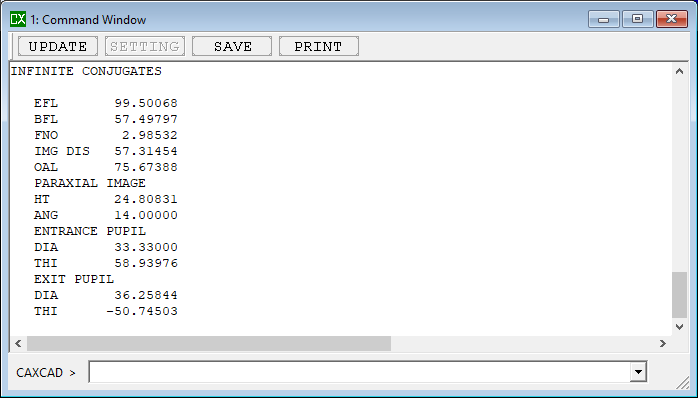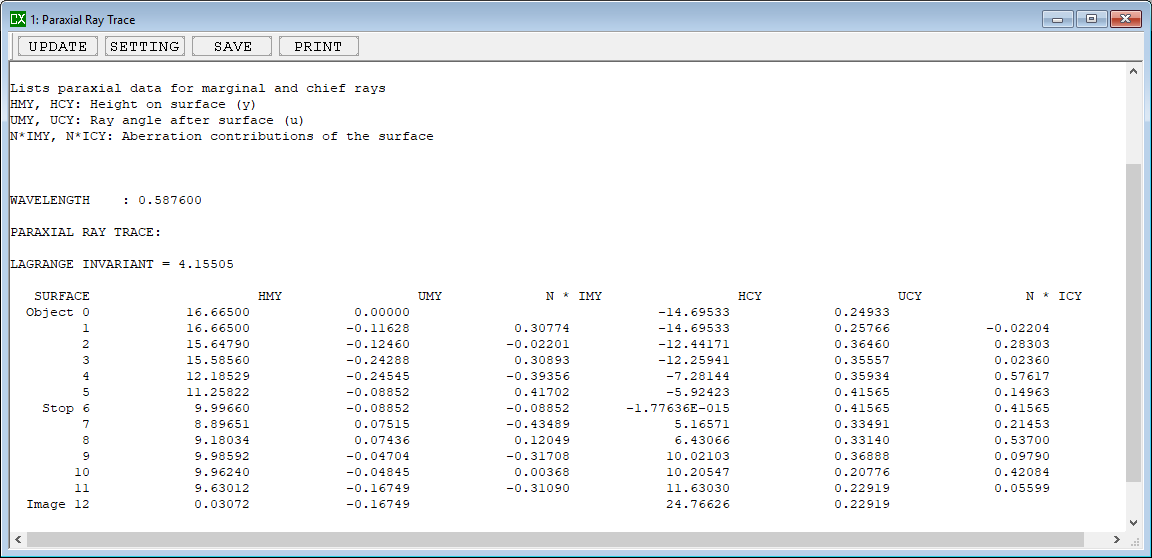Paraxial ray tracing assumes that the tangent and sine of all angles are equal to the angles themselves (in other words, tan(u)=u and sin(u)=u ). This approximation is valid for small angles but can lead to the propagation of error as ray angles increase.

Ray tracing is the primary method used by optical engineers to determine optical system performance. Ray tracing is the act of manually tracing a ray of light through a system by calculating the angle of refraction/reflection at each surface. This method is extremely useful in systems with many surfaces, where Gaussian and Newtonian imaging equations are unsuitable given the degree of complexity.
YNU Raytrace
Paraxial refraction occurs at the vertex plane of a surface. The surface sag is ignored.
YUI equations are used to trace a ray through a surface, the quantity i is needed to calculate the aberration contributions of the surface, so the additional labor produces useful data. In fact, if the aberrations of the system are to be calculated, the YUI method is actually more efficient than the YNU method. The YNU method is used in CAXCAD for paraxial ray tracing and provides a additional item for i parameter.
The optical system in the region close to the optical axis, we called it as "paraxial region". The treatment of light in this paraxial region is to as "paraxial optics".The paraxial approximation enables us to computer some of the most basic properties of an optical system with a minimum of calculation in CAXCAD.
Paraxial surface :

Paxaxial ray trace including the first order data is the base of the CAXCAD

Paraxial Ray Trace Data 